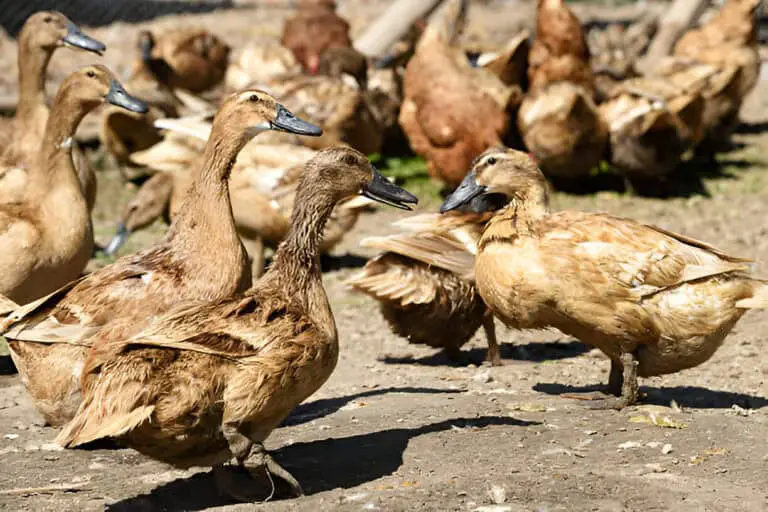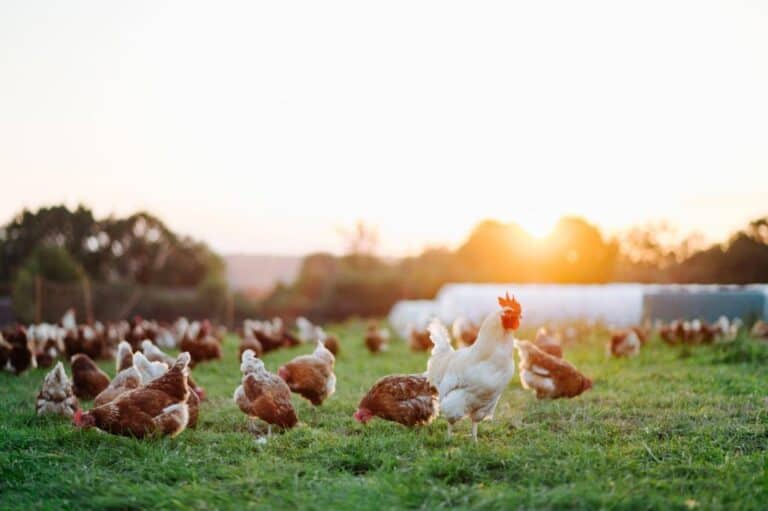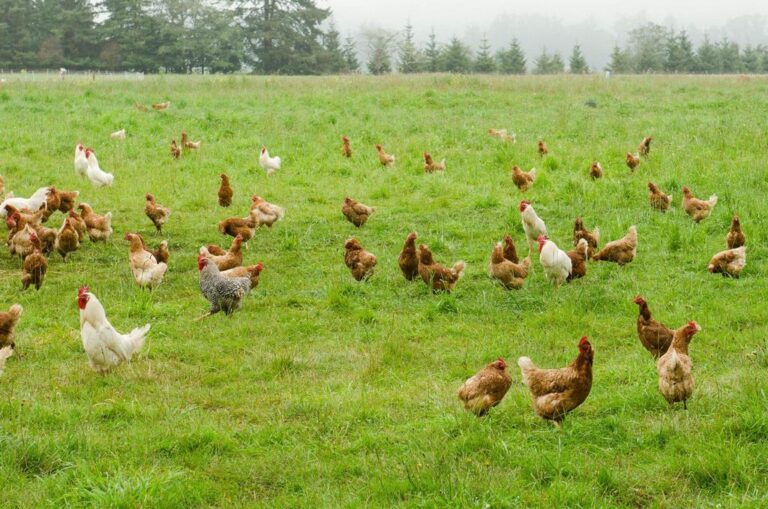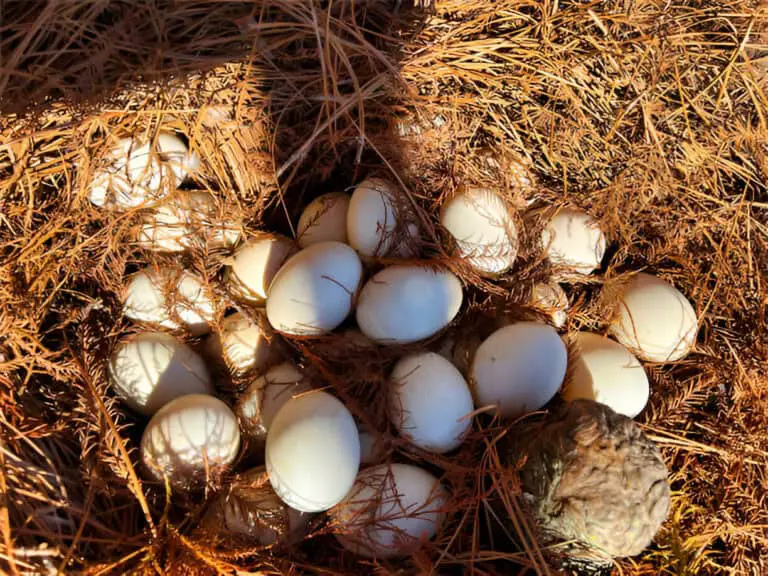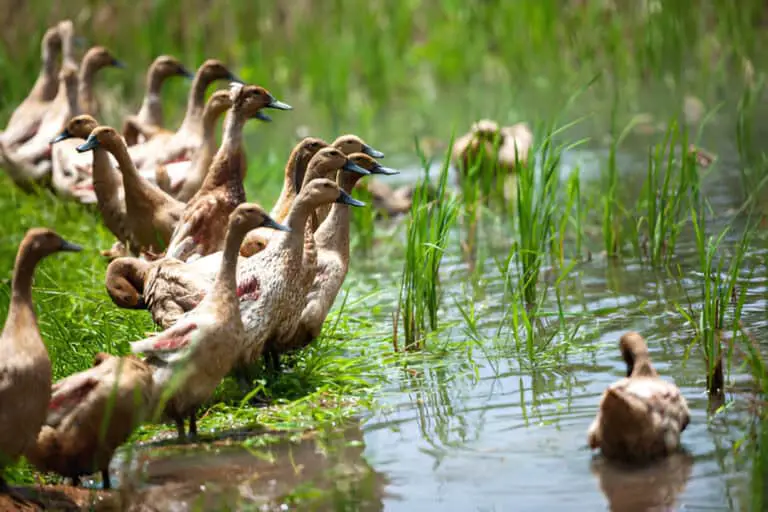What to Feed a Turkey at Every Stage: From Fluffy Chicks to Full-Grown Gobblers
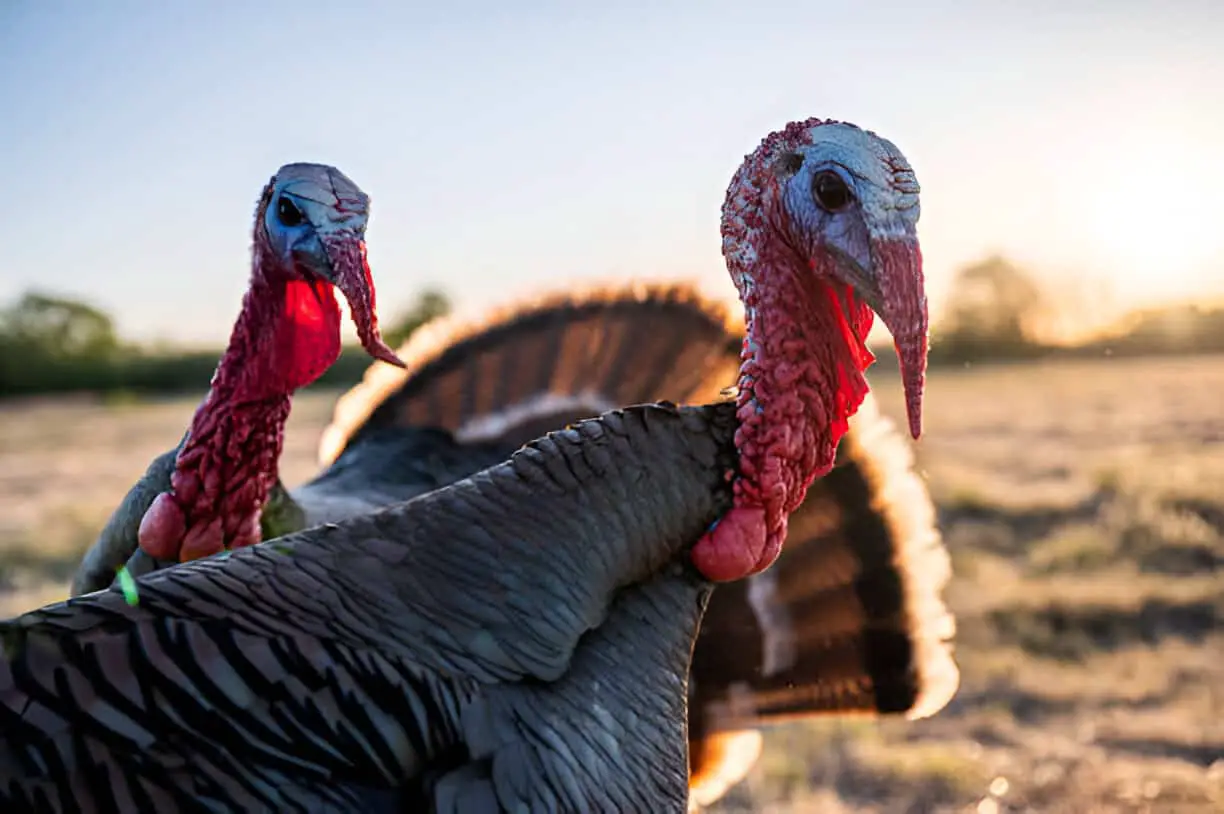
Getting your first turkey—whether it’s a fluffy chick or a full-grown adult—is an experience filled with excitement. At first glance, their size can be surprising, especially if you’re used to keeping chickens. Yet beyond their impressive build lies a gentle and curious nature that often wins people over quickly.
In my experience, turkeys are far more approachable and social than most chickens. They’ll follow you around, investigate what you’re doing, and seem genuinely interested in your presence. This friendliness makes them not just farm animals but companions in the yard.
That said, turkeys do have different care needs. One of the most significant differences is their diet. Compared to chickens, they require higher levels of protein to stay healthy and grow strong.
In this guide, I’ll share exactly what turkeys eat and how to meet their needs. You have the option to either read the guide in its entirety or navigate around using the table of contents.
Turkey’s Nutrition Requirement
Many people have different views on how much protein birds need as they grow. This can make it tricky to understand the nutritional needs of turkeys.
There are several feeding guidelines for turkey diets. These steps can be challenging for backyard turkey owners to follow.
You don’t need this level of precision unless you are growing turkeys for sale. For backyard chicken producers like you and me, these three dietary guidelines are realistic and doable.
| Stage | Age | Protein Level |
| Chicks | 1 – 4 Weeks | 28% |
| Young Birds | 5-12 Weeks | 1–4 Weeks |
| Adult Birds | 13 Weeks and Older | 14 – 1 |
Chicks

Not all chick starters are created equal when it comes to feeding them. Compared to newborn chickens, turkey chicks need a higher proportion of protein.
When picking a feed for your newborn turkeys, remember that turkey starter protein can vary by over 10% compared to chicken starter.
Protein Percentage in Chick Starters
| Feed Type | Protein Percentage |
| Chick Starter (Chicken) | 18 – 19% |
| Turkey Starter | 26 – 30% |
| Gamebird Starter | 28 – 30% |
A turkey chick absorbs the yolk into its belly as it first hatches. For a day or two, the chick gets enough food from the yolk. Thereafter, it’s important to provide a good first meal.
You might be able to buy a “turkey starter” depending on where you live. If you can’t find a specific turkey starter, ask your local feed store for a “game bird” starter.
The protein content of game bird and turkey starters will be higher than that of chick starters. This is needed to ensure proper growth. Turkeys grow much larger than chicks.
Bringing Together Chicken and Turkey Chicks
You should always use the higher protein feed if you are raising turkey and chicken chicks together.
The protein content of chick starter is usually between 22 and 24 percent. This protein ratio is fine for hens, but it may slow turkey chick growth.
For the first few weeks, feeding your baby birds turkey feed with more protein shouldn’t have any long-term repercussions. However, it is advisable to feed them species-appropriate food and to brood them separately whenever possible.
Young Birds
The protein requirements of your turkey chick (poult) decrease as it ages.
You can begin feeding a lower protein diet at about five weeks of age. This kind of feed is commonly referred to as “grower” feed in feed stores.
If you can’t find a turkey or game bird specialized product at your feed store, you can still get this protein amount from traditional chick starting (the kind offered for hens).
Remember that there is no need for the transition time to be precise. If you still have half of a bag of high-protein turkey starter left after five weeks, feed it until it runs out and switch to a new bag when you get a fresh one.
Adults
Your turkeys can begin eating a standard turkey or game bird feed at around 13 weeks. You can begin giving a smaller percentage of protein at this point.
When it comes to commercial chicken diets, the lower the feed’s overall protein percentage, the less expensive it is. Therefore, you can save money by feeding a reduced-protein meal to your bird if it doesn’t require the extra protein.
You can use a 16–20% protein meal for adult turkeys. Once more, the majority of feed companies will market this as game bird feed.
For the remainder of its life, this meal will be the mainstay of your turkey’s diet. However, it’s not the only food your turkey can consume. Let’s examine a few of the meals that turkeys can consume.
Turkey-Friendly Foods
You may not realize how many more food options you have for turkeys and other backyard birds. Using a pre-formulated feed is, of course, the obvious choice for the majority of hens and turkeys. An all-natural or homemade diet and “grazing” your turkeys on pasture are other choices.
Turkeys can consume a wide variety of foods, and you can mix and match them based on the circumstances. These are a few of the more popular turkey food varieties.
Already Formulated
Veterinarians and poultry nutritionists from around the world help formulate commercial feeds for your bird.
These are usually the most complete and nutrient-dense meals on the market. Your bird will receive the protein, vitamins, and minerals it needs to thrive and live a healthy life if you feed it pre-formulated turkey feed.
Turkey growers and colleges have spent millions on research. This ensures that turkeys and hens grow strong and healthy since they are commercial birds.
Rations for meat birds help them grow fully but not too fast. This way, their health stays safe.
For your birds, the majority of feed stores will carry a correctly prepared turkey feed. Just make sure you utilize the above information to determine the appropriate type for the age of your bird.
Feed for Chickens
Is it possible for your turkey to survive on the same chicken feed that you use for your hens? The simple answer is yes. Although your turkey can survive on chicken feed, it isn’t the healthiest choice for him.
It’s similar to giving your dog cat food. Turkeys and chickens need different nutritional compositions for their diet, just like dogs and cats do.
This means the turkey needs more protein. There are also differences in vitamins and minerals between the two species.
The All-Natural Diet
Turkeys consume insects, berries, nuts, seeds, plants, and small vertebrates when they are in the wild. Acorns are very popular in the winter when there aren’t many other food options.
Like chickens, wild turkeys will scratch worms, snails, and seeds to the surface using their feet. Actually, they frequently do this for the most of the day.
It would be challenging to give your backyard turkeys the whole nutrients they need from household goods alone. Having said that, you can certainly add certain everyday foods to your diet.
On a small farm, try scattering food scraps across the yard or throwing a handful of mealworms into the ground to let your turkey “forage.”
You may also want to consider letting your turkeys roam around in your green areas, even if your grass is low, to find food.
Your turkeys will still enjoy hunting for their own food even if you just give them prepared feed once or twice a day. The following foods are popular among turkeys:
Grains
Barley
Sunflower Seeds with Black Oil
Bulgar
Corn
The flax
Grits (cooked)
The millet
Milo
The Niger
Oats, especially oatmeal that has been cooked
Cooked pasta
cooked rice
Wheat
Fruits
Turkeys may consume a wide range of fruits, such as:
Apples
Without the skin, bananas
The blueberry
The seeds and flesh of cantaloupe
Cherries
Crabapples
Grapes
Seed and meat honeydew
Peaches
Pears
Apomegranates
Raisins
Raspberries
A strawberry
Watermelon, both the seeds and the flesh
Vegetables:
The asparagus
cooked beans
Beets (both the greens and the vegetable)
Peppers with bells
Broccoli
Brussels sprouts
Cabbage
Raw or cooked carrots, as well as carrot tops
The cauliflower
Corn (raw or cooked, canned or on the cob)
Cucumbers
The eggplant
Kale
The lettuce
Peas (flowers, vines, and peas)
Popcorn without salt or butter
Just cooked potatoes without the green skins
Raw or cooked pumpkin with seeds and meat
Summertime squash
Yams and sweet potatoes that are cooked without the green peels
Small amounts of tomatoes, either raw or cooked
Cooked turnips
The zucchini
Nuts:
Acorns
Almonds
Beechnuts
Brazil Nuts
Nuts from Hickory
Macadamia Nuts
Only commercial food-grade peanuts. Not peanuts from the garden.
Pecans
Pine Nuts
Walnuts
Note: To get rid of salt, commercially purchased nuts should be rinsed in water.
Dairy
Cheese
Plain or flavored yogurt
Insects and Additional Things:
Mealworms
Cicadas
Sweets:
Berries, nuts, and fruits from the above safe list are great turkey treats.
Remember that the natural diet of turkeys is higher in protein than sugar. As a result, foods high in sugar, like the majority of fruits, should be given to them sometimes as a treat rather than as a mainstay.
You can make treats tastier for your turkey. Also, improving their environment helps, especially for birds in smaller spaces.
By giving your turkey goodies, you can encourage him to investigate his surroundings in the following ways:
Hang veggies or fruits.
This is especially easy with fruits and vegetables that have some sort of stem. For example, you could wrap a string around a broccoli stalk and suspend it so the turkeys can nibble at it.
Fill a Net with Candy.
Look for a beautiful fishnet at your neighborhood party supply store. Fill it with vegetables and fruits, then hang it. You can simply fasten it to a wall or tree, or you can hang it in the center of a coop. To make loading and reloading simple, use a hook.
The hens and turkeys you have will enjoy “foraging” from the net. Just make sure the holes in the net are large enough for them to peck at, but not so large that they can become stuck with their entire head within.
Make Use of a Suet Cage
You may fill a suet cage like the one above with fruits and veggies so your birds have something to feed on all day.
Just be sure to frequently add fresh fruits and vegetables and wipe out the cage if any are left behind, although this is unlikely.
Hand-feed Turkeys Treats
Feeding your turkeys goodies by hand is one of the best ways to make them more amiable and accustomed to you. They will discover that you don’t harm them and that they typically receive a delicious treat when they approach you.
Just be cautious not to hold treats in your bare hands as this could lead to pecking. Throwing food at your feet can help. It encourages the turkeys to get over their fear of coming closer.
Foods Turkeys Must Avoid Eating

There are undoubtedly some items that turkeys shouldn’t consume. In general, don’t give your turkeys anything you wouldn’t eat yourself. Rotten food and moldy bread should be tossed in the garbage rather than being fed to your birds. Let’s take a closer look at what turkeys shouldn’t consume.
Moldy Food
Like hens, turkeys shouldn’t eat moldy foods. This applies to any food that has mold on it, including moldy bread.
Moldy foods contain mycotoxins, which can harm any bird with a crop, according to HipChick.com.
According to Mississippi State University, birds may actually get mycosis (also known as thrush) if they are fed moldy meals.
Toxic Foods
Certain foods have been known to poison turkeys. It’s not always the same amount that must be taken to cause hazardous effects. Avoid deliberately feeding your turkeys any of these things.
If your turkeys inadvertently consume one of these items, simply remove it from their pen and monitor for any adverse effects.
You shouldn’t give turkeys to eat:
The color aubergine
Persin, which is found in avocados, can be fatal to birds.
Peels from potatoes. The green parts of potatoes, such as the sprouts and leaves, are toxic to both people and birds.
Raw peanuts may contain aflatoxin, a fungus.
any kind of tobacco, such as leaves, abandoned cigarette butts, etc.
The leaves of tomatoes
Plants that Provide Shade
Rhubarb leaves contain a toxin called oxalic acid.
Common Plants in Gardens That Turkeys Can’t Eat
Seeds of Morning Glory
Pea seeds that are sweet
Datura Seeds
See my post, What Not To Feed Turkeys, for additional information on what turkeys shouldn’t consume.
Remember to Give Turkey Water
I’ve covered a wide range of foods that you can and shouldn’t feed your turkey. Without including water, this essay wouldn’t be comprehensive.
Although I understand that water isn’t food, it is imperative that your turkey always have access to clean, drinkable water.
You mentioned liquid, so of course water should be liquid, I know what you’re thinking. The truth is that water freezes throughout the winter. For example, even with snow on the ground, it is very possible for your turkey to become dehydrated.
Turkeys can also topple water troughs or buckets in the heat. Because they are large birds, occasionally strutting around can have unexpected results, such as tipping over their drink.
You should always make sure that your turkey has access to clean, fresh water. Give them a choice between two water sources if at all possible.
How to Make a Turkey Fat
I know some turkey farmers eat their birds, but mine were pets. If so, here are some tips to help make your turkey fatter.
Give them high-protein food.
When with a younger bird, you can continue to provide a higher protein feed to turkeys when they are ready to be put on the table. This may take the shape of grower feed or starter.
A gamebird diet with 30% protein will probably work best for fattening up a turkey.
You can give your turkey high-protein foods to eat in addition to commercial diets that are high in protein. For instance, alfalfa hay is a fantastic high-protein treat that your turkeys can consume.
Providing Extra Grains
Examine increasing the amount of corn and oats in your turkey’s diet. Although corn is particularly effective at increasing weight, it usually causes birds to accumulate fat rather than muscle. To encourage the bird to eat more, it is still beneficial to provide various food options.
Oats are an excellent grain to feed and contain between 11 and 14 percent protein. You may encourage your turkey to eat by providing them with a selection of cereals to choose from.
Keep the feed in one place.
By feeding them in one place, you can reduce their urge to wander and “exercise,” even though I dislike the idea of cooping up turkeys to help them put on weight.
They will be less likely to walk about all day burning calories if all the food and water are conveniently located in one place.
Precautions
It’s crucial to remember that, despite being destined for the table, your turkeys should be given the opportunity to grow and develop normally. When young turkeys are growing, you don’t want to keep them on too much protein.
Fast-growing birds are more likely to experience physical problems and may also be more vulnerable to internal diseases, such as liver or other organ abnormalities.
You should only try to fatten up your turkeys in the two to four weeks before butchering. Depending on the breed, this usually occurs between 18 and 22 weeks of age.
Frequently Common Asked Questions
On a farm, what do turkeys eat?
Turkeys on a farm usually consume a specific game bird feed that the farmer supplies. During the day, they can also usually forage for grains, lizards, and insects.
What is the winter diet of turkeys?
Wild turkeys will look for berries, nuts, plants, and insects throughout the winter months. When accessible, they will also consume small vertebrates like mice.
Can peppers be eaten by turkeys?
However, according to R, turkeys can consume bell peppers of any color. Red peppers can develop pinkish yolks when fed, according to Scott Beyer, a poultry specialist at Kansas State University.

